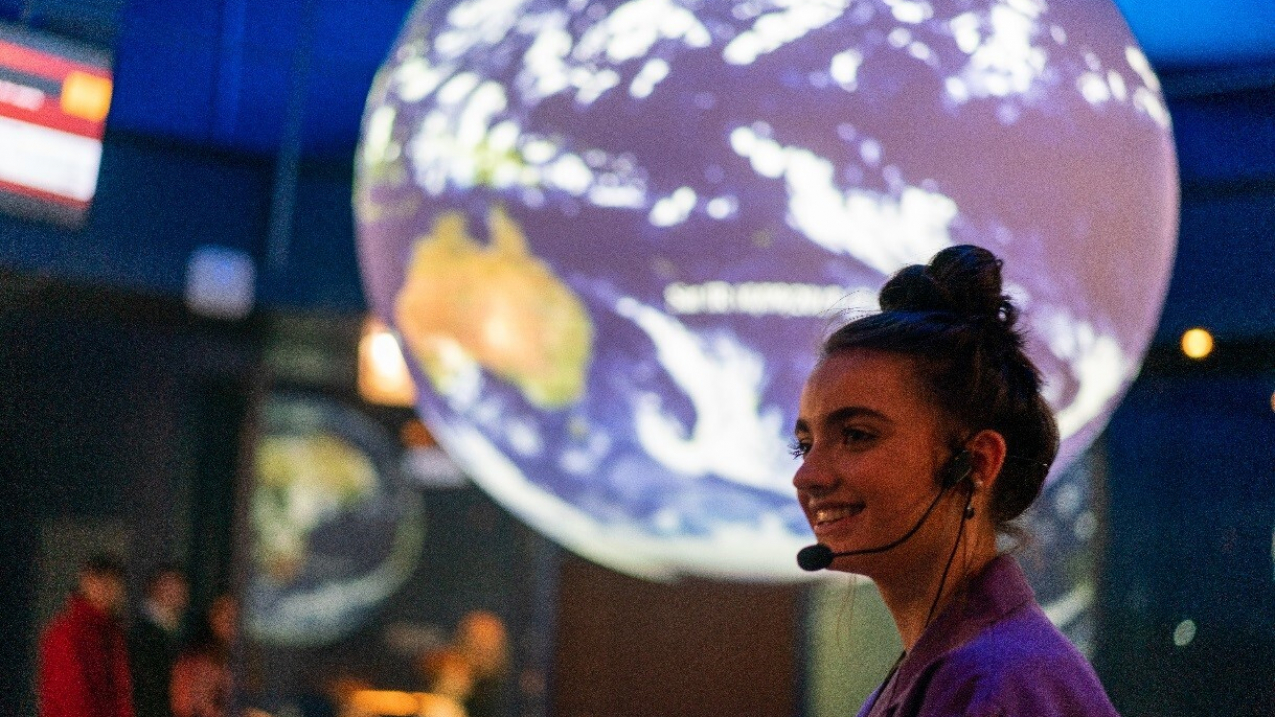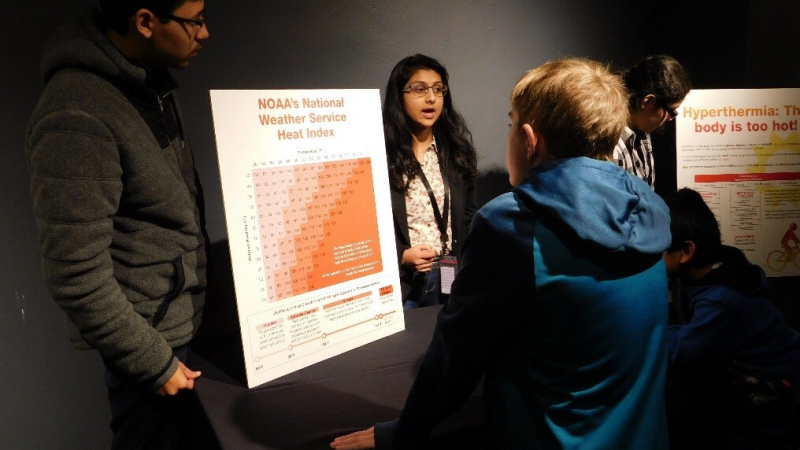In 2019, Saturday visitors to the Museum of Science and Industry (MSI) in Chicago, one of the largest science museums in the world, learned about the city’s past and future climate and weather challenges from an unlikely source — Chicago teens. As future leaders who will make decisions about the issues they face in their communities, MSI positioned high school-aged teens to act as advocates for building the city’s resilience to the impacts and consequences of global climate change.

Malgorzata Gasienica-Bednarz, a high school student, talks about acid rain using the Science on a Sphere six-foot-diameter globe at the Museum of Science and Industry in November 2019. (Image credit: Museum of Science and Industry, Chicago)
In Illinois, the average annual temperature has increased by about 1°F since the beginning of the 20th century. In turn, cities and rural communities in the state have become more vulnerable to the effects of climate change, such as the changing frequency and magnitude of heatwaves. In 1995, Chicago experienced one of the city's worst natural disasters, a scorching heat wave that claimed more than 700 victims, most of whom were socially and economically marginalized people. As the climate warms, future heat waves, such as that experienced in 1995, are likely to be more common, intense, and longer-lasting.
To help Chicagoans understand and better respond to the city’s climate challenges, MSI sought support from NOAA’s Environmental Literacy Program (ELP), which supports community resilience through education. Through an ELP grant, MSI facilitated an out-of-school project called “Teen Advocates for Community and Environmental Sustainability (Teen ACES)” for Chicago teens, most of whom are from groups that are historically underrepresented in STEM.

Teens were trained to use NOAA Science On a Sphere® to present the global aspects of climate change to museum visitors. They also delved into regional aspects of climate change by working with datasets from the Midwestern Regional Climate Center and Illinois-Indiana Sea Grant. These resources helped them understand the causes and related real-world issues of the environmental hazards their communities face. Teen participants began as “Science Minors” and were promoted to “Science Achievers” after participating in 10 weeks of training sessions and contributing 50 service hours at MSI. Science Achievers learned methods to effectively communicate their science knowledge by leading learning experiences for museum visitors, acting as the face of science in the museum.
Over the course of MSI’s efforts, 90 Chicago teens helped over 16,000 museum visitors to improve their awareness, knowledge, and understanding of Chicago’s climate past, present, and future. Teen participants also helped visitors to learn more about Chicago’s current response to the impacts of climate change, through a partnership with the Chicago Metropolitan Agency for Planning (CMAP), an award-winning regional planning organization for northeastern Illinois. Teen participants expanded their outreach to the Chicago community by offering additional learning opportunities for the public at Chicago Public Library branches and on Chicago’s public access TV station. Over 3,000 school-aged youth participated in these teen-led educational programs to explore Chicago’s climate resilience efforts and encourage their lifelong civic involvement in the decisions that affect their lives.
The Environmental Literacy Program and their partners have empowered people to understand and use NOAA-related science to create informed, safe, and actively prepared communities. The Teen ACES project exemplifies efforts to build resilience through education that are underway throughout the nation, supported by NOAA’s Environmental Literacy Program.
A version of this story was featured in the Fiscal Year 2019 NOAA Education Accomplishments Report.



